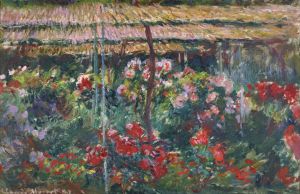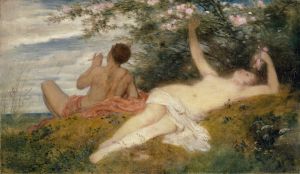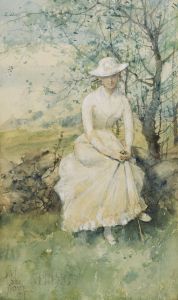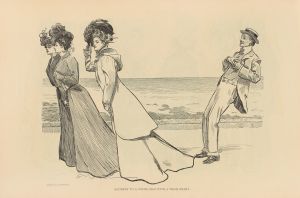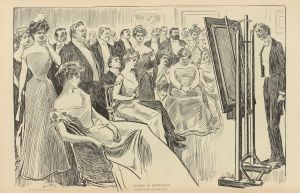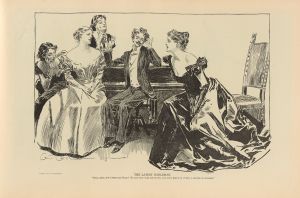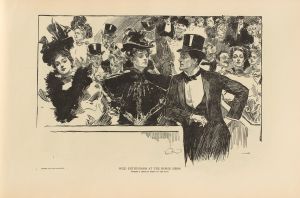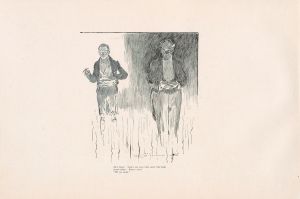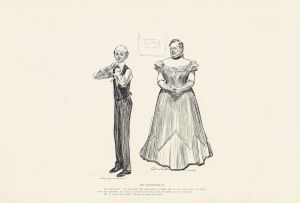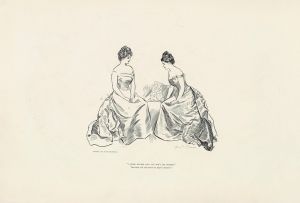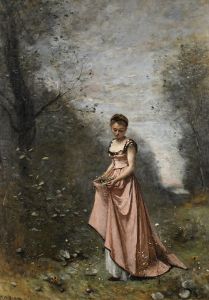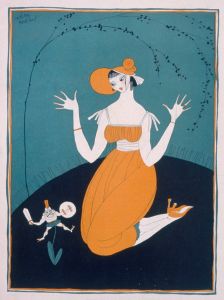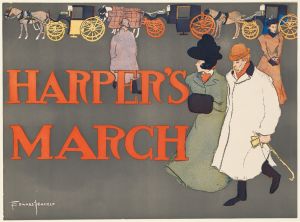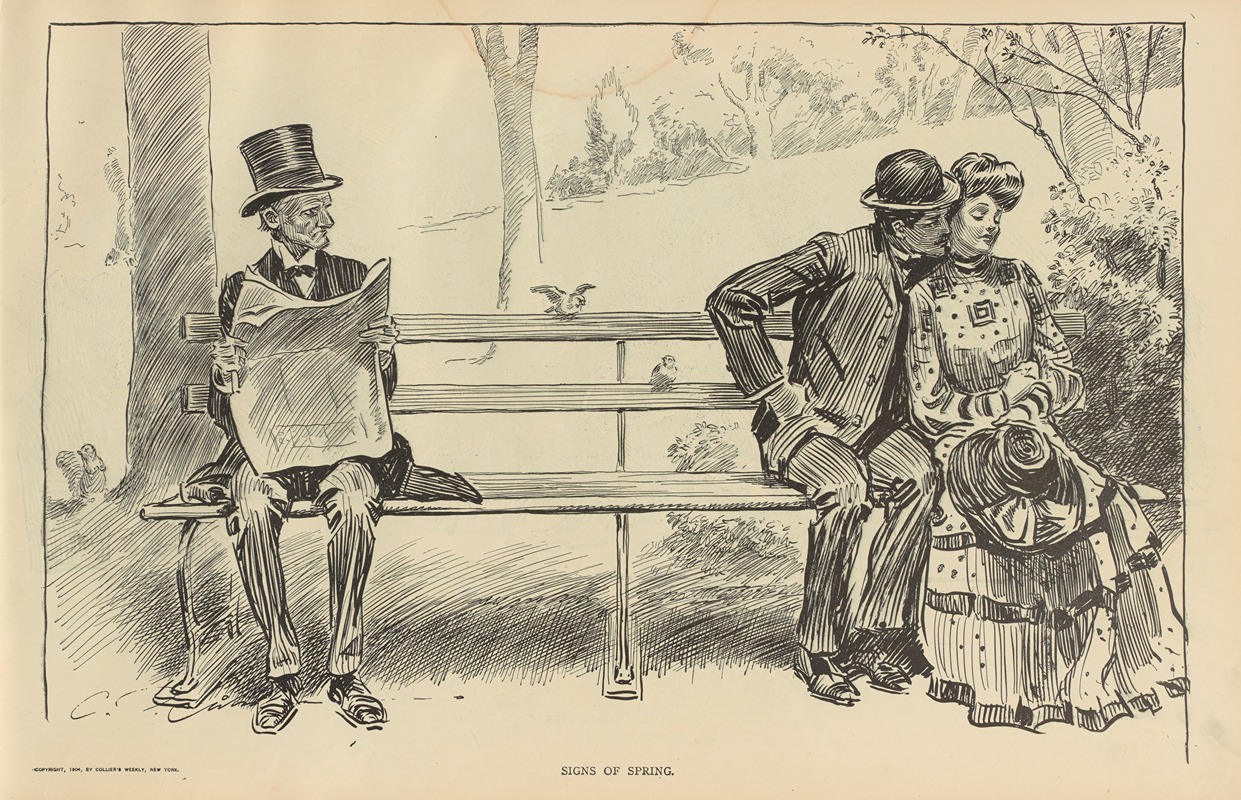
Signs of spring
A hand-painted replica of Charles Dana Gibson’s masterpiece Signs of spring, meticulously crafted by professional artists to capture the true essence of the original. Each piece is created with museum-quality canvas and rare mineral pigments, carefully painted by experienced artists with delicate brushstrokes and rich, layered colors to perfectly recreate the texture of the original artwork. Unlike machine-printed reproductions, this hand-painted version brings the painting to life, infused with the artist’s emotions and skill in every stroke. Whether for personal collection or home decoration, it instantly elevates the artistic atmosphere of any space.
Charles Dana Gibson was an influential American illustrator, best known for creating the iconic "Gibson Girl," a representation of the idealized American woman at the turn of the 20th century. His work was widely published in magazines such as Life, Harper's Weekly, and Scribner's, and he became one of the most celebrated illustrators of his time. Among his numerous works, "Signs of Spring" is one of the illustrations that showcases his distinctive style and thematic focus.
"Signs of Spring" by Charles Dana Gibson is an illustration that reflects his keen observation of social settings and human interactions. While specific details about this particular work are not extensively documented, it is consistent with Gibson's broader oeuvre, which often depicted scenes of social life, fashion, and the nuances of relationships. His illustrations were characterized by their detailed line work and the ability to convey emotion and narrative through expression and posture.
Gibson's work, including "Signs of Spring," typically features the "Gibson Girl," a character that became synonymous with the modern, independent woman of the early 1900s. The Gibson Girl was portrayed as confident, stylish, and socially adept, often depicted in leisurely or social settings. This character became a cultural icon and influenced fashion and societal norms of the era.
In "Signs of Spring," Gibson likely employed his signature style to capture the essence of the season and its impact on social life. Spring, often associated with renewal and change, would provide a fitting backdrop for Gibson's exploration of themes such as romance, social gatherings, or the changing roles of women in society. His illustrations often included a subtle commentary on the social dynamics of the time, using humor and satire to engage the viewer.
Gibson's illustrations were not just art; they were a reflection of the cultural and social landscape of America during his lifetime. His ability to capture the spirit of the age made his work resonate with a wide audience, and his influence extended beyond illustration to impact fashion and popular culture. The Gibson Girl, as seen in works like "Signs of Spring," became a symbol of the new woman, embodying both beauty and independence.
While specific information about the context or reception of "Signs of Spring" is limited, it can be appreciated as part of Gibson's larger body of work that continues to be studied for its artistic merit and cultural significance. His illustrations remain a valuable resource for understanding the social history of the United States during the late 19th and early 20th centuries.
In summary, "Signs of Spring" by Charles Dana Gibson is an illustration that exemplifies his skill in capturing the subtleties of social interaction and the spirit of the times. Through his work, Gibson left an indelible mark on American art and culture, and his legacy continues to be celebrated for its artistic and historical value.





